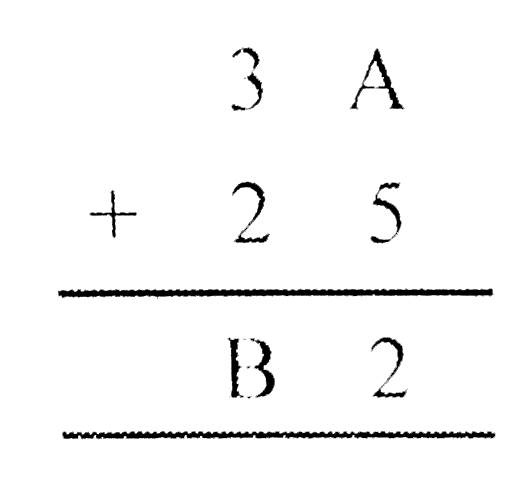दिए गए प्रतिरूप का उपयोग करते हुए लुप्त संख्याओं को प्राप्त कीजिए :
12+22+22=32
22+32+62=72
32+42+122=132
42+52+_2=212
52+_2+302=312
62+72+_2=__2
Step by step video & image solution for दिए गए प्रतिरूप का उपयोग करते हुए लुप्त संख्याओं को प्राप्त कीजिए : 1^(2)+2^(2)+2^(2)=3^(2) 2^(2)+3^(2)+6^(2)=7^(2) 3^(2)+4^(2)+12 ^(2)=13^(2) 4^(2)+5^(2)+"_"^(2)=21^(2) 5^(2)+"_"^(2)+ 30^(2)=31^(2) 6^(2)+7^(2) +"_"^(2) ="__"^(2) by Maths experts to help you in doubts & scoring excellent marks in Class 8 exams.
Updated on:21/07/2023Topper's Solved these Questions
- वर्ग और वर्गमूलBOOK - SHIVLAAL PUBLICATIONCHAPTER - वर्ग और वर्गमूलEXERCISE - Exercise
120 Videos
- राशियों की तुलनाBOOK - SHIVLAAL PUBLICATIONCHAPTER - राशियों की तुलनाEXERCISE - Exercise
40 Videos
- संख्याओं के साथ खेलनाBOOK - SHIVLAAL PUBLICATIONCHAPTER - संख्याओं के साथ खेलनाEXERCISE - Exercise
14 Videos
Similar Questions
निम्नलिखित संख्याओ के वर्गों के इकाई के अंक क्या होंगे ?
(i)81(ii)272(iii)799(iv)3853(v)1234(vi)26387(vii)52693(viii)99880(ix)12796(x)55555
View Solutionनिम्नलिखित का अनुपात ज्ञात कीजिए :
(a) एक साइकिल की 15 km प्रतिघंटे की गति का एक स्कूटर की 30 km प्रतिघंटे की गीत से ।
(b) 5 m का 10 km से (c) 50 पैसे का Rs. 5 से
View Solutionनिम्नलिखित में से प्रत्येक में अक्षरों के मान ज्ञात कीजिए तथा संबद्ध चरणों के लिए कारण भी दीजिएः

View SolutionBr-CH_(2)(CH_(2))_(2)-Ch_(2)-Br+CH_(3)NH_(2)to product to the reaction is :
View SolutionThe value of |[a,a+d,a+2d] , [a+d,a+2d,a+3d] , [a+2d,a+3d,a+4d]|+|[b
View SolutionArrange the following compounds in the decreasing order of the boiling point:
CH3BrI CH3CH2BrII CH3CH2CH2BrIII
CH3CH2CH2CH2Br
View SolutionChoose the chain terminating step
(1) H2→H⋅+H⋅
(2) Br2→Br⋅+Br⋅
(3) Br⋅+HBr→H⋅+Br2
(4) H⋅+Br2→HBr+Br⋅
(5) Br⋅+Br⋅→Br2
View SolutionIn CH_(3)CH_(2)Br,% of Br is
View SolutionPredict all order of reactivity of the following compounds in dehydrohalogenation. a,. I. CH_(3)CH_(2)CH_(2)CH_(2)Cl II. (CH_(3))_(2)CHCH_(2)Cl III. (CH_(3))_(2)CH - CH_(2)Br IV. CH_(3)CH(Br)CH_(2)CH_(3) V. (CH_(3))_(3) C - Br b. I. CH_(3)CH(Br)CH_(3) II. CH_(3)CH_(2)CH_(2)Br III. (CH_(3))_(2) CH - CH_(2) Br IV. (CH_(3))_(3)C - CH_(2) Br
View Solutionनिम्नलिखित यौगिकों में विहाइड्रोहेलोजनीकरण के प्रति क्रियाशीलता का क्रम बताइए ।
(a) CH3CH2CH2CH2Cl, (CH3)2CHCH2Cl, (CH3)2CH−CH2Br, CH3CH(Br)CH2CH3,(CH3)3C−Br
(b) CH3CH(Br)CH3,CH3CH2CH2Br, (CH3)2CH−CH2Br, (CH3)3C−CH2Br
View SolutionThe order of the reaction
5 Br−(aq)+BrO−3(aq)+6 H+(aq)→3 Br2(aq)+7 H2O(l) is
View SolutionArrange the following compounds in the order of increasing S_(N)2 reactivity and explain the order: CH_(3)CH_(2)CH_(2)Br, CH_(3)CH_(3)Br, (CH_3)_(3)C CH_(2)Br, (CH_3)_(2)CHCH_(2)Br.
View SolutionArrange the following compounds in increasing order of acidity.
(i) CH3CH(Br)CH2COOH
(ii) CH3CH2CH(Br)COOH
(iii) CH3CH2C(Br)2COOH
(iv) CH2BrCH2CH2COOH
View SolutionBr-CH_(2)-(CH_(2))_(2)-CH_(2)-Br + CH_(3)-NH_(2), Product of the reaction is:
View SolutionPredict the order of reactivity of the following compounds in dehydrohalogenation:
(a) CH3CH2CH2CH2Cl,(CH3)2CHCH2Cl,(CH3)2CH−CH2Br,CH3CH(Br)CH2CH3,(CH3)3C−Br
(b) CH3CH(Br)CH3,CH3CH2CH2Br,(CH3)2CHCH2Br,(CH3)2CCH2Br
View SolutionThe number of reactions proceeding through free radical mechanism are
(i) C2H5Br+Na+−OCH3
(ii) C2H5Br+AgCN
(iii) C6H5CH3+Cl2(hv)
(iv) CH3CH=CH2+HBr (peroxides)
(v) C2H5Br+alc.KOH
(vi) CH3CH=CH2+HCl(peroxide)
(vii) C2H5Br+H2(NiorPd)
(viii) C2H6+Cl2(hv)
(ix) C2H5Br+NaSH
View Solution
